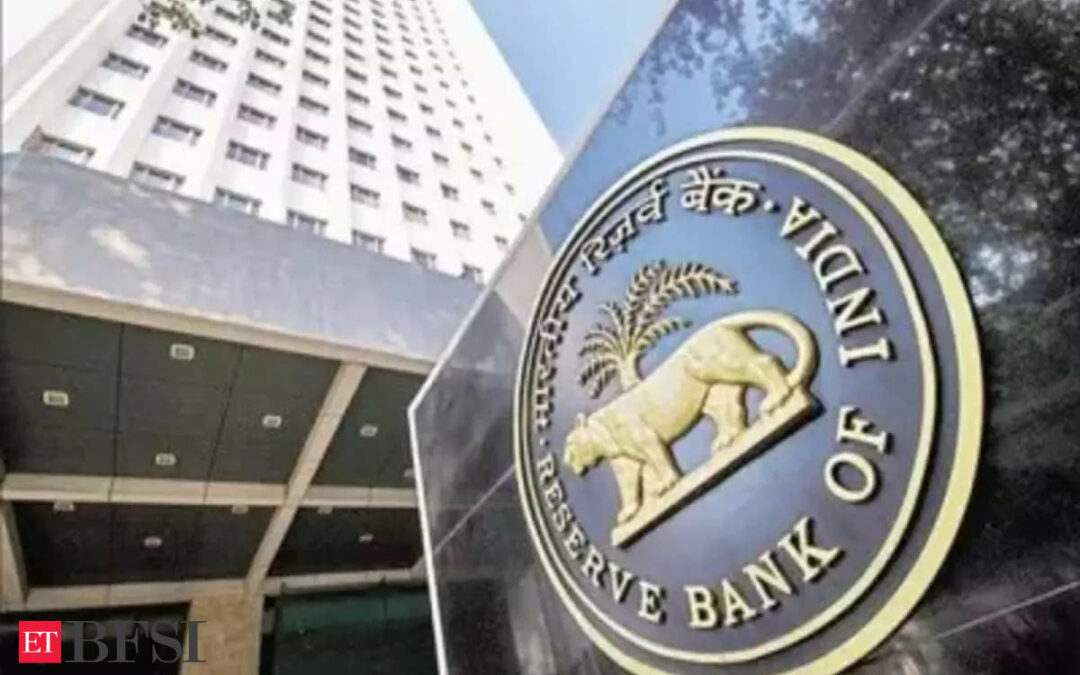The Reserve Bank of India on Friday decided to retain the repo rate at 6.5 per cent, thereby maintaining a pause on its rate-hike cycle for the fifth consecutive time.
Top economists believe that the policy decision by the Reserve Bank of India was on expected lines. They further believe that the RBI was less hawkish on liquidity management in comparison to the previous policy. Some economists continue to expect that the next rate cut will not be before August 2024.
Here’s what the Economists said :
Abheek Barua, Chief Economist and Executive Vice President, HDFC Bank
The RBI policy was status quo as the central bank kept its policy rate and stance unchanged, as expected. However, the RBI seemed less hawkish on liquidity management compared to the previous policy which could be seen as a signal of a move towards neutrality. This implies that while the RBI is likely to act against a significant surplus, it might also not favour a large deficit going forward. We see some near-term downward pressures on liquidity due to tax outflows but a more comfortable position beginning 2024 led by higher government spending and foreign inflows. Moreover, structural changes like the opening of the SDF and MSF windows on weekends and holidays by the RBI today could also help aid more symmetric liquidity balances in the system. The overnight rate could start moving towards the repo rate from being close to the MSF over the coming months. The liquidity stance also seems to be in line with the RBI’s inflation forecast which shows a gradual move towards 5.2% and 4% in Q1 & Q2 in FY25.
The other change in the policy was the significant upward revision in the GDP forecast for FY24 to 7% — higher than our expectations of 6.8% for the full year. Interestingly, for next fiscal year, RBI GDP projections also remain on the higher side at 6.7% and 6.5% in Q1 & Q2 FY25. Whether these upbeat numbers signal that there is room for monetary policy to remain tight for longer or infact assume support from some easing in monetary policy remains an open question. For now, we continue to expect the RBI to start its rate cut cycle not before the June/August policy in 2024.
Madan Sabnavis, Chief Economist, Bank of Baroda
The policy does not have any surprise on the repo rate or stance. However, there is a major revision in GDP forecasts for the year to 7% which is predicated by a good third and fourth quarter which go with revival in consumption demand. This is significant because we were getting contrary signals from the market on rural demand. The RBI’s forecast of inflation for the quarters of next year are important as the number goes less than 5% only in Q2 which means that given the importance placed by MPC on inflation, it looks unlikely that there can be a rate cut before August of next year. Also the RBI is satisfied with the liquidity situation and has not announced any measures to augment the same. It is assumed that in the general course of activity this equilibrium will be achieved.
Achala Jethmalani, Economist at RBL Bank
The policy outcome remains favourable. A status-quo in policy comes on the back of improved economic growth prospects without posing significant upside risks to the inflation trajectory. The status-quo on liquidity approach and no fresh regulations on lending activity is reflective of the Reserve Banks’ positive outlook on both price stability and financial sector stability. This is a good policy as it favours business continuity. We see the Repo rate at 6.50% with nimble approach on liquidity management continuing till March 2024.
Upasna Bhardwaj, Chief Economist, Kotak Mahindra Bank
Expectedly the MPC has maintained a status quo in rate and stance. The MPC has retained focus on 4% inflation being the medium target, with monetary policy actions to ensure disinflationary trends ahead. We continue to expect prolonged pause by the MPC, with liquidity tools being more closely if necessary to manage the policy stance.
Indranil Pan, Chief Economist, YES BANK
There were no surprises in the policy from the rates and the stance perspective. It is more or less a cut-paste from the previous policy except that the growth estimate is hiked to 7% from 6.5% earlier. On the other hand, there has been no change to the inflation forecast for the current financial year. However, the RBI consistently, and as also in previous policies, harped on the volatilities to price stability from the food side. The governor warns that the RBI would unlikely lower its guard on inflation and one or two months of positive data on inflation does not, therefore, allow them to chance the course of monetary policy. The problem for the RBI is that inflation continues to refuse to come down towards the 4% target and the earliest that it may do so, as per the RBI’s own projections is in Q2 of the next financial year. Thus, it may be safe to say, and keeping in mind the credibility of the central banker, there is unlikely to be any chance of a rate cut till that time, unless of-course something dramatically changes.
The RBI sounds out again the issue of financial stability and the importance of the same. This explains the recent actions of the RBI towards increasing risk weights of some categories of the personal loan. While liquidity has taken center-stage in terms of policy announcements over the past two policies, there were no fresh announcements today on the liquidity front. Further, tensions on an imminent OMO was taken off and may be used only if liquidity flows turn out to be humongous in light of the bond market inclusion related flows.”
Radhika Rao, Executive Director and Senior Economist, DBS Group Research
The policy commentary was hawkish, underscored by the cautious view on inflation and emphasis on their preparedness to tighten further if warranted. As a parting shot, the Governor highlighted the risk of overtightening levers. In our view, these comments neither imply that the policy has taken a dovish turn nor a change in stance to neutral is imminent. Instead, with a strong growth momentum, the MPC will be mindful of signs of generalisation of food price pressures which could dilute gains from the recent easing of core inflation. Apart from the main policy levers, the central bank is on track to reverse the pandemic-driven excesses, as demonstrated by the ongoing tapering of the RBI balance sheet and tightening the liquidity balance to align with its price stability mandate.
Rajani Sinha, Chief Economist, CareEdge
Today’s monetary policy statement of RBI had a lesser hawkish undertone compared to the preceding October statement. The upward revision of the GDP growth forecast for FY24 to 7%, coupled with the absence of any reference to future OMO sales, represents a favourable development for both the economy and the markets. The Governor underscored the RBI’s commitment to striking a balance in monetary policy, navigating between optimism fuelled by a few months of positive data and the risk of policy over-tightening. Additionally, the statement indicated the RBI’s comfort with the existing liquidity conditions. Considering the current circumstances, the decision to maintain the status quo in both policy rates and stance appears justified.
Manoranjan Sharma, Chief Economist, Infomerics Ratings
As repeatedly stressed by us both in the print and electronic media, e.g., on October 10, October 11, December 5, December 6 and 7, 2023, the RBI kept the benchmark Policy rates unchanged and also retained the stance of the Policy as “the withdrawal of accommodation” on the basis of a comprehensive assessment of the global and domestic environment. This Policy is entirely in conformity with our pre-policy expectations. In view of the evolving growth-inflation trade-off, the MPC took the right call in holding the rates steady.
ALSO READ: RBI Monetary Policy: Rate unchanged at 6.5%, FY24 GDP growth at 7%, inflation 5.4%
RBI Innovation Hub to setup FinTech repository by Apr’24
ETBFSI now has its WhatsApp channel. Join for all the latest updates.











